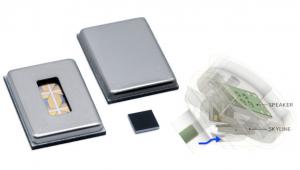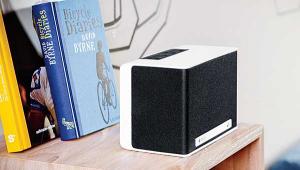Face Off: Surround-Speaker-Configuration Wars Page 6
I've always been big on clear, distinct, directional sound. I want to hear exactly where sounds are coming from. Once the terms monopole and dipole were explained to me, I assumed that monopole speakers were for me—they shoot the sound right at you, so you can hear where it's coming from. This is why I was so surprised with the results of this blind test. I consistently preferred configurations that included dipole speakers. Ultimately, I preferred the all-dipole configuration; however, having at least one set of dipoles (either on the sides or in the back) still filled in the gaps and made me feel like I was a part of the action.
When it came down to picking between one surround back speaker or two, I definitely preferred two. I still want distinct, directional sound, though. With the rear monopoles, sounds that I thought should be directly behind me often seemed to come from one side. I was pleasantly surprised to find that using dipole speakers in the rear eliminated this problem.
Of course, the sound is also affected by the listener's location. I happened to be sitting in the exact middle of the room, and the room was a perfect rectangle with no open doorways or windows. (These people at HT take their listening seriously.) From this location, I definitely preferred all dipoles with a dual-rear-speaker configuration. However, I also thought the sound was good with monopoles on the sides, as long as dual dipoles were used in the rear.—Brandon Dahl
I showed up at the studio on a sunny Saturday afternoon, ready to sacrifice my day to the cause of better sound. After eating a Carl's Jr. Superstar and fries (Mike's bribe to get us there), I was ready to sit back and let my ears do the work. We compared the common 5.1 speaker setup with 6.1- and 7.1-channel configurations and then compared both dipole and monopole versions of those arrangements.
Unlike the other listeners, I liked having just one speaker for the back channel, although I did like the sound of the dipole more than that of the monopole. With two speakers in the back, there was almost too much going on. Sound seemed to bounce around. In a room larger than the one I was digesting in (which was 21 feet by 15 feet), two speakers may be necessary. But in a room the size of HT's listening room (or smaller), one speaker was just fine. With one dipole, I thought the sound was clearer, but not to the point of being distractingly obvious. It seemed to add a more even flow when sounds traveled from the right surround speaker to the left. I'd say that you can't really go wrong either way. Two surround back speakers are better than none, but, in my opinion, one was simply more satisfying.—John Martorano
Apparently, we didn't have any die-hard Quadraphonic fans on our listening panel. Whenever I espouse the benefits of dipole speakers for surround sound, I'm usually yelled at by some older (or, shall I say, more chronologically experienced) gentleman who says that Quad was the best. These folks always insist, sometimes violently, that surround systems should, like old Quad systems, consist of five identical full-range loudspeakers. These people seem to forget that five full-range speakers are impractical for the vast majority of users and that Quad was, like 8-track, a colossal failure.
That being said and having witnessed the outcome of our direct-versus-diffuse, single-versus-dual Surround EX speaker configuration Face Off (by far the most wordy Face Off title ever), I can continue to recommend dipole speakers for the majority of installations. Sure, for the handful of action movies that utilize discrete effects for a small portion of the film, monopole speakers might be better. However, to me, the benefits these speakers may add to those scenes don't outweigh the distractions they cause with other, more-ambient sounds. Dipoles, on the other hand, only soften the more-discrete effects while enhancing the majority of diffuse sounds. Besides, since the people who like the bizarre or, as Jason put it, "creative" mixing of some 5.1 music CDs are likely the same people who liked Quad stereos, I don't care if they complain. They were going to anyway, assuming they even made it past the first paragraph. For the rest of us, dipoles will offer enveloping sound that won't distract from the action onscreen. —Mike Wood
Of the various surround setups we listened to, I preferred the dual rear Surround EX speakers, as opposed to the single one. I liked the fuller, more-enveloping sound. Even though the EX channel is a decoded mono channel, the two rear speakers seemed to create a rear stereo effect.
In the dual-rear-surround speaker configuration, I preferred monopole side surrounds with dual dipoles in back. This seemed to offer the best of both worlds on software that has discretely placed surround information and software that has diffused ambient surround sounds. However, the all-dipole surround system came in a very close second and seemed to do almost as good on making the discrete/localized information just as aggressive and exciting. More tests with other EX software might be helpful.
I preferred monopoles for the multichannel music software that was "creatively" mixed with a different instrument in each channel and dipoles for the traditional "ambient/audience/ reverb" surrounds.
All things considered, I'd go with the monopole side surrounds and dual dipole back surrounds, as this setup offers more flexibility. And, if you can switch your speakers like the M&Ks, all the better.—Jason Koehler
- Log in or register to post comments






















































